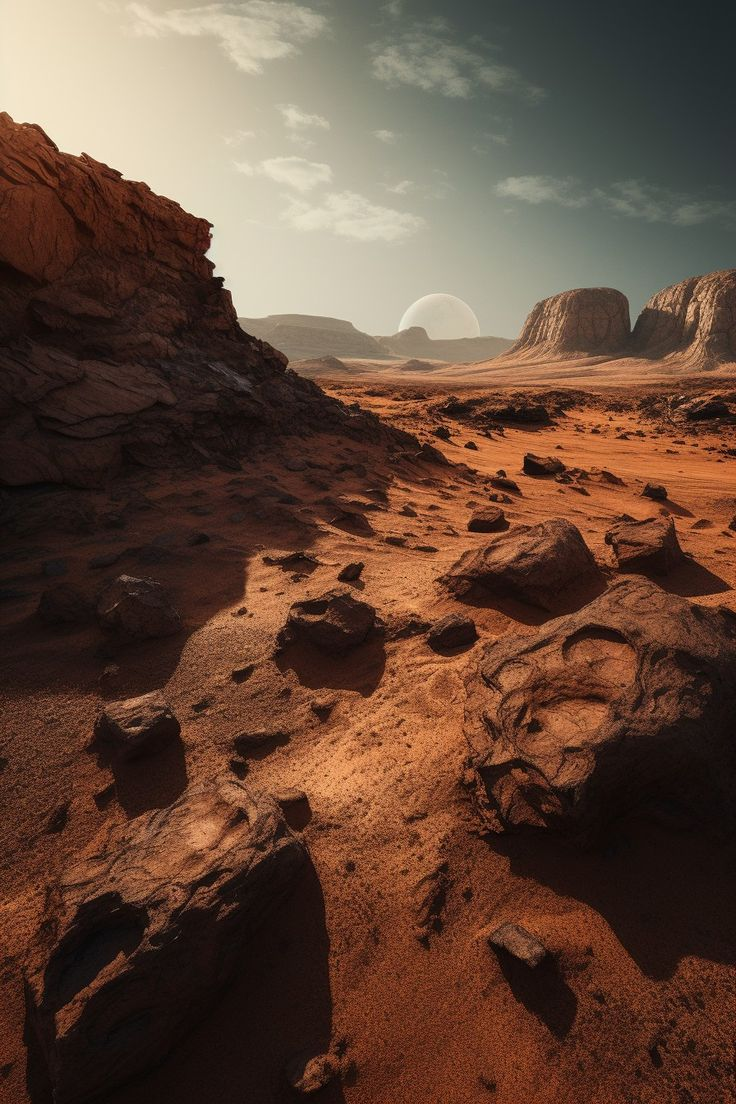The Dwarf Planet of Mysteries
Pluto, once considered the ninth planet, is now classified as a dwarf planet. Located in the Kuiper Belt, it is a fascinating world with complex geology, a tenuous atmosphere, and a surface marked by ice and mountains. Despite its small size and distant location, Pluto offers significant insights into the outer regions of our solar system.

1. Atmosphere:
Pluto has a thin and temporary atmosphere that expands when the dwarf planet is closer to the Sun and freezes onto the surface as it moves farther away.
Composition: Mainly nitrogen, with traces of methane and carbon monoxide.Seasonal Changes: The atmosphere thickens during Pluto’s perihelion (closest approach to the Sun) and collapses during its aphelion (farthest distance).Hazy Layers: The atmosphere contains layers of haze extending up to 100 miles (160 km) above the surface, created by sunlight breaking down methane into complex hydrocarbons.Temperature: Extremely cold, with average surface temperatures of -229°C (-380°F)
2. Geological Features:
Pluto’s surface is diverse and geologically active, showing a mix of ancient and relatively young terrains.
Sputnik Planitia: A massive, heart-shaped glacier of nitrogen ice, part of Tombaugh Regio, is one of Pluto’s most recognizable features.Mountains: Icy mountains, some reaching heights of 11,000 feet (3,500 meters), are composed primarily of water ice.Canyons and Craters: Pluto’s surface features deep canyons and numerous craters from past impacts, though some regions appear surprisingly smooth, indicating recent geological activity.Cryovolcanism: Evidence suggests the presence of cryovolcanoes (ice volcanoes) that may have erupted water and other volatile ices.


3. Ecosystem:
Pluto does not support an ecosystem due to its extreme conditions and lack of essential elements for life.
- Challenges for Life:
- No liquid water on the surface.
- Extremely low temperatures.
- Thin atmosphere incapable of sustaining any known biological processes.
- Potential for Subsurface Oceans: Some scientists speculate that a subsurface ocean beneath Sputnik Planitia could exist, raising questions about the potential for microbial life.
4. Weather:
Pluto’s weather is influenced by its distance from the Sun and its thin atmosphere.
- Seasonal Variations: Pluto’s highly elliptical orbit and axial tilt lead to significant seasonal changes, with surface ice sublimating into gas and refreezing depending on its distance from the Sun.
- Haze and Winds: The haze particles settle slowly, potentially creating weak winds that shape surface features like dunes.
- Extreme Cold: Surface temperatures vary between -233°C (-387°F) and -223°C (-369°F), making Pluto one of the coldest known celestial bodies.


5. Inhabitation:
Pluto is currently uninhabitable due to its harsh environment.
Challenges for Life:
- Extreme cold and lack of liquid water on the surface.
- Thin atmosphere and high radiation levels.
- Minimal energy sources for sustaining life.
Scientific Interest:
- Studies of Pluto and its moon Charon can provide insights into the Kuiper Belt, the solar system’s formation, and the potential habitability of icy worlds in similar environments.
- NASA’s New Horizons mission revealed that Pluto is more geologically active than previously thought, sparking interest in further exploration.
Pluto, though small and distant, is a dynamic and complex world that continues to challenge our understanding of planetary science. Its unique features, from its icy plains to potential subsurface oceans, make it a key target for studying the outer reaches of the solar system and the conditions on icy dwarf planets.